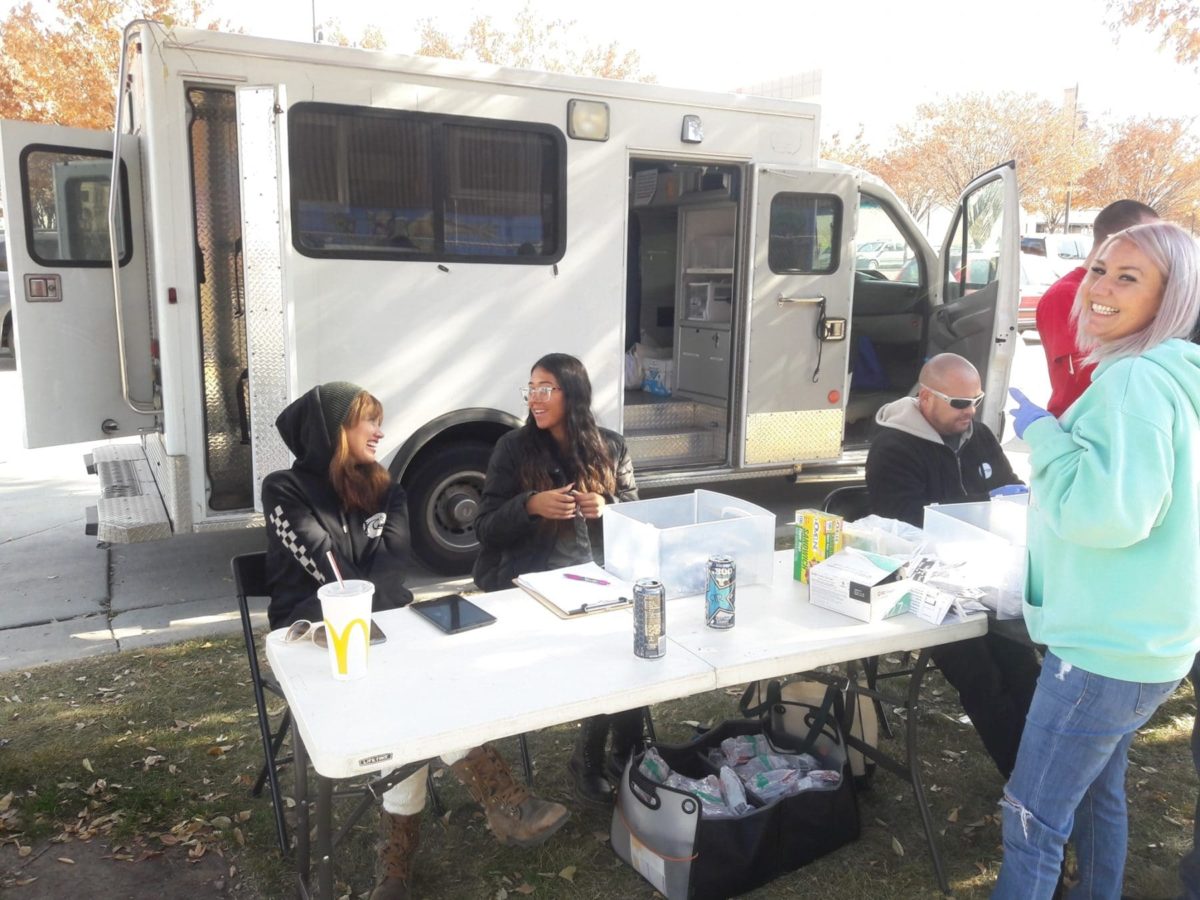Deaths involving opioids, methamphetamine and other drugs have reached record highs in Utah. The state government passed legislation in 2016 to create syringe exchanges, but harm reduction advocates still battle against stigma from conservatives and liberals alike to implement programs in a unique cultural context.
In Utah, “many people view harm reduction programs, even naloxone, as enabling addiction,” Mindy Vincent, executive director of the Utah Harm Reduction Coalition, told Filter. “We are a very abstinence-based state in every sense of the word. Utah is dominated by the LDS church [Church of Jesus Christ of Latter-Day Saints, whose adherents are known as Mormons] in culture, social practices and in our political system. This religious stronghold has compounded the shame around addiction here and for many, it is a moral failing.”
In December 2016, Vincent founded Utah’s first syringe exchange, in Salt Lake City. She described facing opposition from community members, neighbors and local politicians—even those who had voted for the program. But over the years, she and her team have worked closely with local agencies including law enforcement to serve people using drugs. Opposition has faded as city residents have seen the positive impact of this work.
Vincent was inspired to do this in part because of losing her sister, Maline Hairup, to a heroin overdose in August 2014. She was a devout LDS church member who struggled with opioid use disorder in secrecy.
Family tragedy from drug-related deaths has motivated other Utahns to do life-changing harm reduction work. In July 2015, Jen and Sam Plumb founded Utah Naloxone in honor of their brother Andy, who died of a heroin overdose in 1996. So far they have distributed 65,000 naloxone kits throughout the state, in partnership with the Utah Department of Human Services.
“This creates a perfect storm for chaotic use and addiction.”
Utah’s rate of deaths from opioid-involved overdose in 2017 was 17.4 per 100,000 people, higher than the national rate of 14.6 per 100,000. That number has nearly doubled since 2000. But deaths and their causes vary widely by region.
Carbon and Emery Counties, which are over 100 miles south of the state’s largest city of Salt Lake, have a combined opioid-involved death rate of 47.7 per 100,000, nearly triple the statewide rate. Nearly all of the deaths in this region, 94 percent, were related to prescription opioids (unlike the national trend).
The downtown district of Ogden, meanwhile, a city just 40 miles north of Salt Lake City, has an opioid-involved death rate of 39.1 per 100,000, more than double the statewide rate. But this area had a much higher proportion of deaths related to heroin, at 42 percent.
Utah also suffers disproportionate deaths involving other drugs, like methamphetamine. The state’s methamphetamine-involved death rate was about seven per 100,000 in 2017, more than double the national rate of 3.23 the same year. Total methamphetamine-involved deaths in Utah have shot up in the past decade, from 31 in 2010 to a record high of 217 in 2018.
“Most of Utah is rural, so people in those areas still have a difficulty accessing even naloxone,” Vincent explained. “Most are unable to access a syringe exchange. In our rural areas, we lack transportation, treatment, shelters, housing, employment and so on. This creates an insane amount of barriers for services and a perfect storm for chaotic use and addiction. And due to the shortage or lack of funding for harm reduction, expanding services to these areas continues to be difficult.”
But even with all the geographic and economic challenges, the greatest obstacle to expanding harm reduction in Utah is simply stigma against people who use drugs.
Vincent described her futile efforts to establish a harm reduction program in hard-hit Carbon County, where a group of “transplant” artists successfully organized against providing services to people using drugs “in their backyards.”
Still, harm reduction plans are moving forward in the state. Democratic State Representative Jennifer Dailey-Provost has begun working on a proposal to create a safe consumption site in Utah. John Huber, US Attorney for the District of Utah, has firmly opposed the idea, and it has a long way to go. But a 2019 federal court ruling in Philadelphia may hold promise for Utahn harm reductionists.
Photo of the Utah Harm Reduction Coalition working in Salt Lake City, via Facebook.




